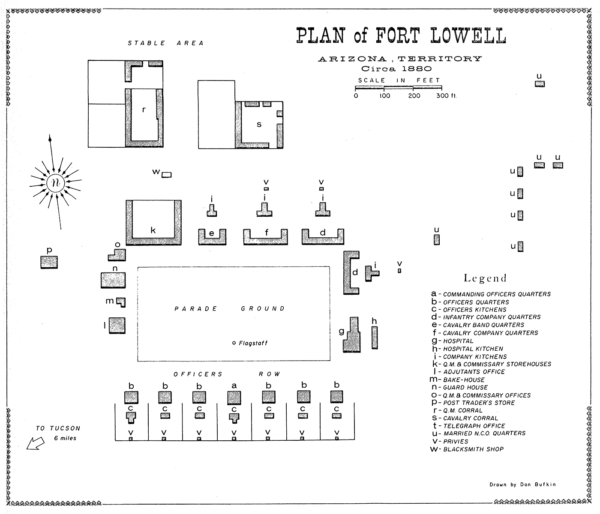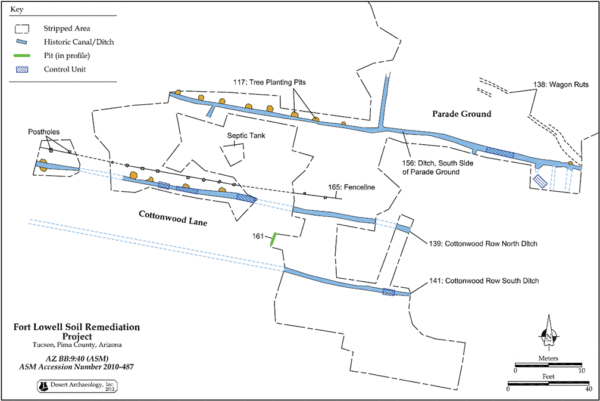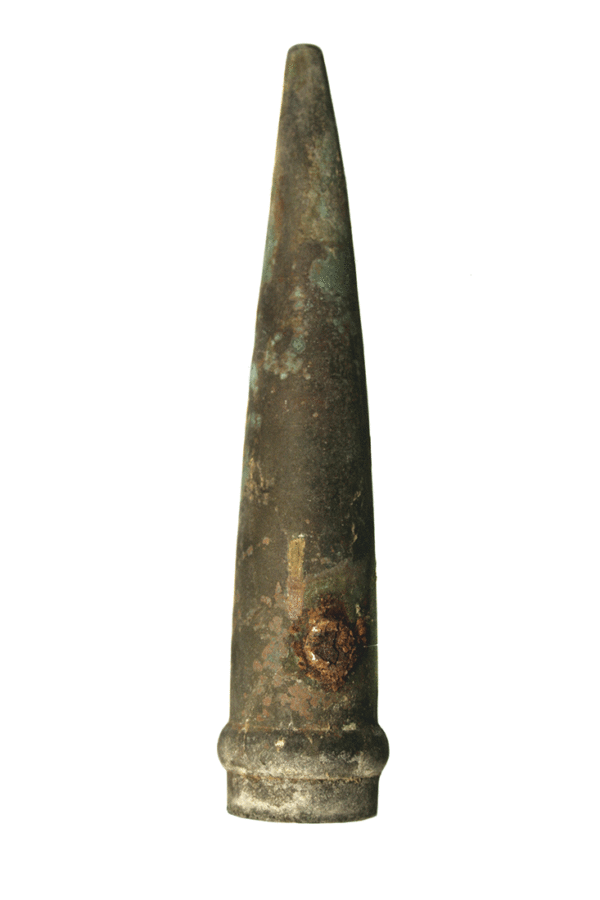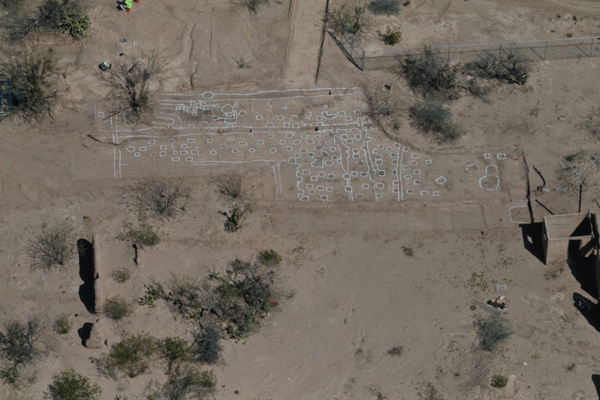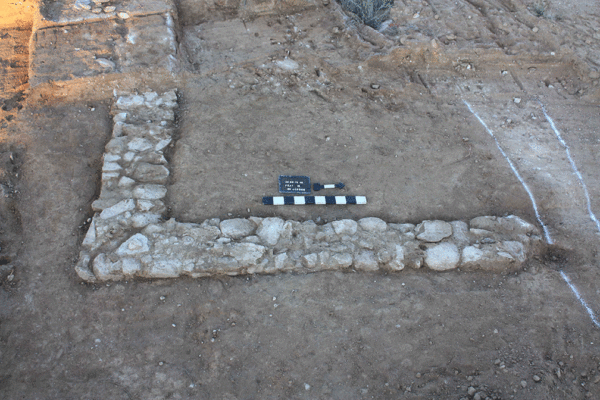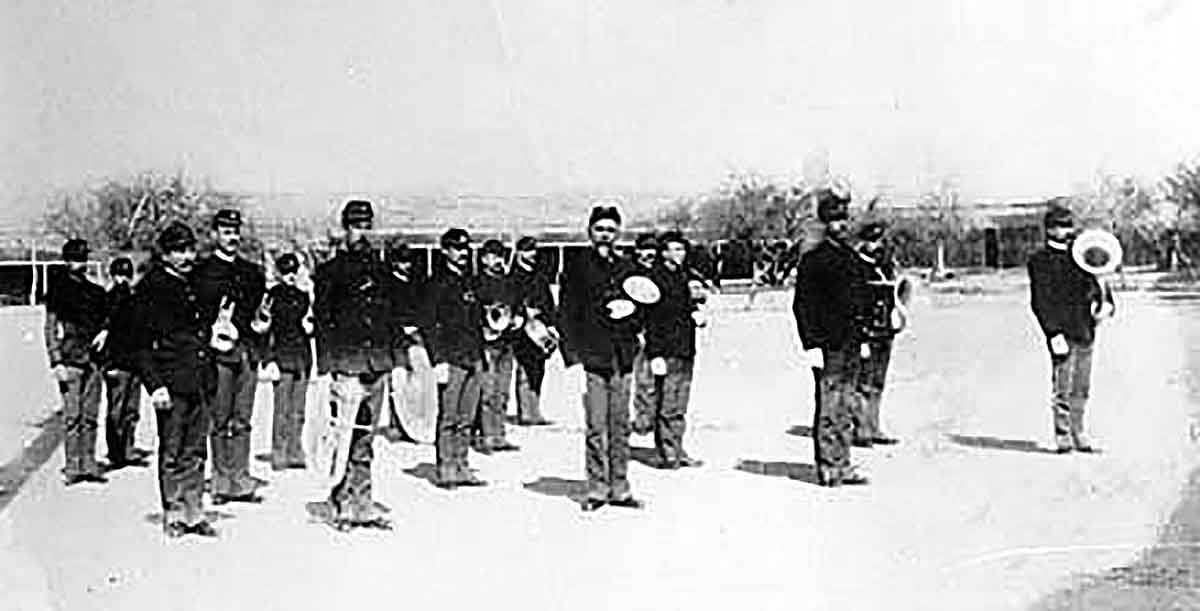
The Historic Era at Fort Lowell
Homer Thiel describes the history of some of the military structures you will see when visiting Fort Lowell park in Tucson.
In 1873 the soldiers stationed at Camp Lowell in downtown Tucson (now Armory Park) packed up their tents, weapons, and equipment and moved several miles to the northeast. Poor sanitation and the prevalence of mosquito-borne malaria, endemic along the Santa Cruz River, were factors in the move. The local residents were likely glad that the rowdy soldiers, who frequently got drunk and assaulted civilians, were farther away but still available to protect the area and spend money.
The new camp, soon renamed Fort Lowell, was the duty post for hundreds of cavalry and infantry soldiers. The men replaced the tents with adobe brick buildings arranged around a parade ground. On the south side were officers’ quarters. The west side had a bakery, guardhouse, and the adjutant’s office, where the commander had an office and school lessons were held. On the north were the quartermaster’s buildings, stables, and barracks. The west side had a hospital and additional quarters. Separate kitchens and privies were present behind many of the quarters.
The soldiers were tasked with protecting the region from Apache raiders. After Geronimo’s surrender in 1886, the need for the fort decreased. The decision was made to close the fort, which occurred in 1891. The contents of the fort were auctioned off in November 1896. Doors, windows, flooring, and roofs were stripped from many of the buildings, and the adobe bricks soon began to erode. Acts of vandalism accelerated the destruction.
However, some of the buildings were occupied by squatters. The westernmost three officers’ quarters were purchased by Dixie and Dolly Cate in 1908. Dixie soon died from tuberculosis. Dolly Cate decided to open “Mrs. Cate’s Tuberculosis Sanitorium” in these buildings to care for patients. The arrival of the Southern Pacific Railroad in 1880 had led to the transportation of hundreds of people to Tucson who were seeking a cure for the dreaded disease, which often affected teenagers and younger adults. It was thought that the mostly dry climate and sunshine of the Tucson area was beneficial and might cure people. A few individuals survived, but most failed in this endeavor. Tuberculosis was the leading cause of death in Tucson until the early 1920s, and it was not until the 1940s that effective drug treatments were developed and mortality was reduced.
In 1928 Mrs. Cate sold the property to Harvey and Fronia Adkins, who had arrived in Tucson with their ailing daughter Dicey, who died from tuberculosis the year before. The Adkins family opened a steel tank manufacturing business and lived on the property until the early 2000s, when the City of Tucson acquired the property in a land trade.
Desert Archaeology was tasked with stripping soil contaminated by oil and metal shavings from the property. During this work, we encountered numerous prehistoric features, as well as many features dating to the fort occupation.
On the north side of the three officers’ quarters, we encountered the ditches, picket fence post holes, and tree holes for Cottonwood Row. The cottonwood trees that shaded the street were watered by shallow irrigation ditches, one of which ran north along the west side of the Parade Ground.
Numerous pieces of ammunition were found scattered about. A gilded bronze flagpole tip was found in the Parade Ground area, perhaps lost by one of the cavalrymen.
South of Cottonwood Row, stripping revealed almost 150 planting pits and shallow ditches for a garden. Census records show that Chinese gardeners farmed in the area, and it is possible one or more of these immigrants was working as a gardener for an officer.
A separate project saw stabilization and the construction of roofs over the Officers’ Quarters. The work revealed several nearby features containing fort-era artifacts. Pieces from a QUICK MEAL kerosene stove were found in a pit near Officers’ Quarter 3. This type of stove was manufactured in St. Louis between 1882 and 1901.
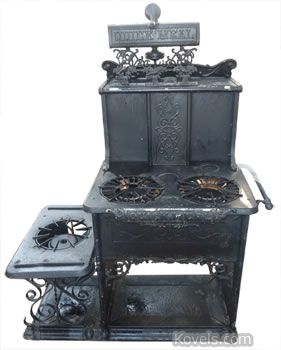
A modern photograph of a QUICK MEAL kerosene stove (courtesy Kovels antiques website).
A small privy pit was found at the southeast corner of Officers’ Quarters 3. It contained a variety of artifacts, including a canister ball from a 12-pound U.S. Army field cannon, marbleized porcelain doorknobs, lamp chimney fragments, a harmonica, and military hat decorations.
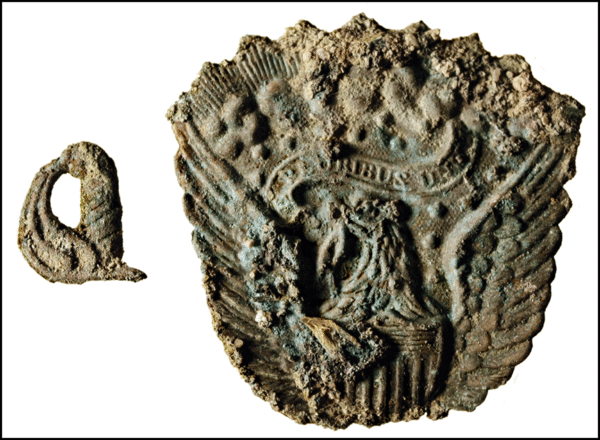
On the left, a fragmentary cavalry hat pin that originally would have consisted of two crossed sabres and a bugle. On the right, a Hardee hat pin with an eagle, shield, and band reading “E Pluribus Unum,” used to pin up the side of a cap. Both of pressed brass.
At the north end of the property, the foundations of the Guard House and Bakery were documented. The Guard House was 52 feet square with an enclosed exercise yard on its western side. Five cells inside were used to hold soldiers accused of or found guilty during court martials of criminal activities, including desertion.
Today the hazardous waste has been removed, ground cover spread over the area, and the three Officers’ Quarters stabilized. In the future, this portion of Fort Lowell will be opened for interpretation, possibly with exhibits inside Officers’ Quarters 3, which is well preserved.
This project was funded by Pima County for the City of Tucson.
Resources
Complete reports are available online courtesy of the City of Tucson and Pima County:
Homer Thiel (2013): Archaeological Investigations at the Fort Lowell-Adkins Steel Property Locus of Fort Lowell, AZ BB:9:40 (ASM), Tucson, Pima County, Arizona. Desert Archaeology Technical Report 2012-12.
Homer Thiel, M. L. Brack, and Tyler S. Theriot (2008): Cultural Resources Assessment for the Fort Lowell-Adkins Steel Property within Historic Fort Lowell, Tucson, Pima County, Arizona. Desert Archaeology Technical Report 2008-08.


